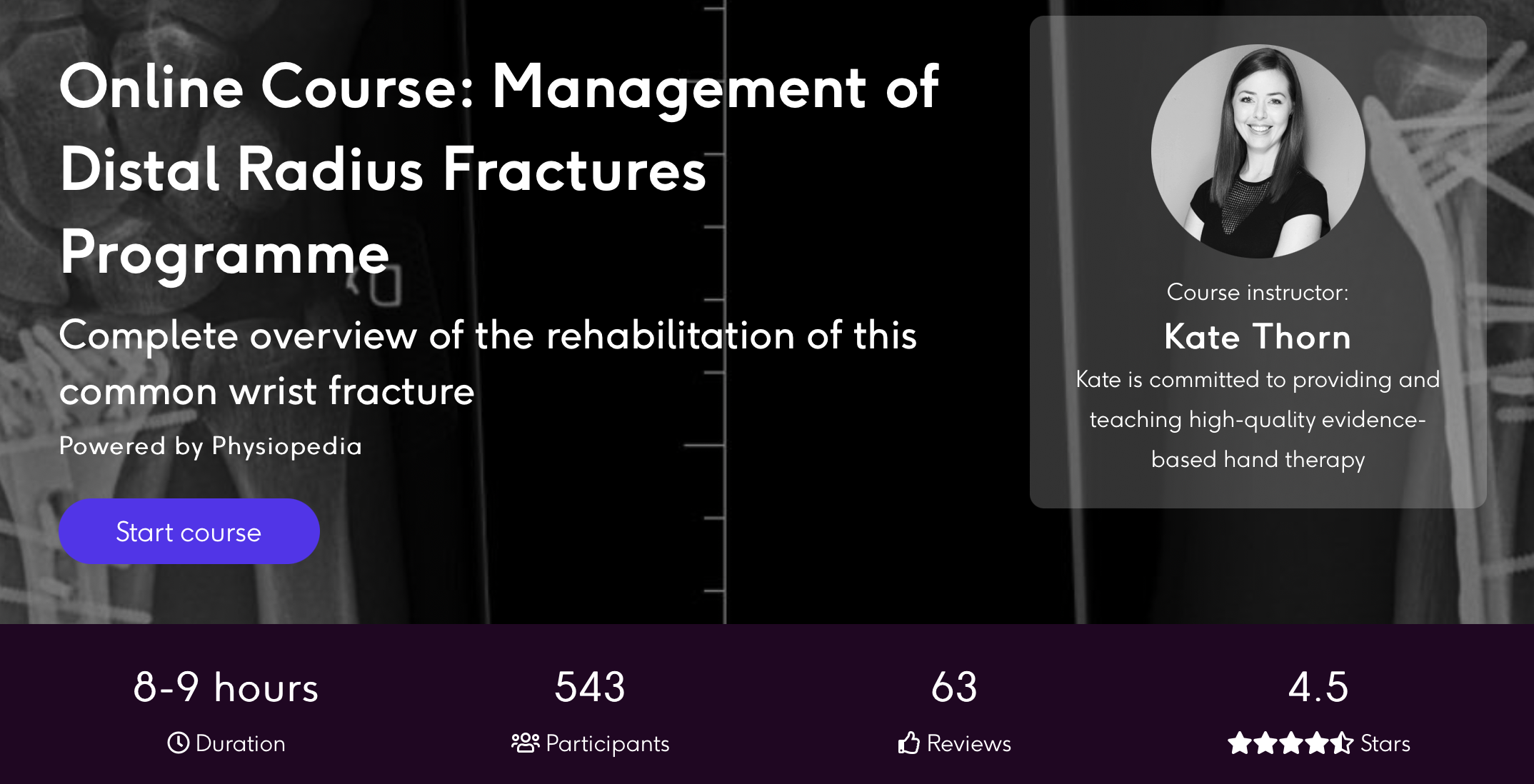“Excellent value to my practice. Really worth doing!”
De Quervain’s Tenosynovitis is classified as radial-sided pain at the wrist and the base of the thumb. This condition is relatively common, affecting 1.3 percent of women and 0.3 percent of men. Physiotherapists play a valuable role in managing De Quervain’s, using their expertise in rehabilitation to improve outcomes in patients with this condition.
The syndrome affects the extensor pollicis brevis (EPB) tendon and the abductor pollicis longus (APL) tendon which are located on the dorsal side of the forearm and go to the lateral side of the thumb. They go through a fibrous-osseous tunnel made of the processus styloideus radii and the extensor retinaculum. It’s a small and tricky area of anatomy which poses a unique challenge to clinicians.
In this brand new course, Kate Thorn reviews the clinically relevant anatomy, discusses management and highlights important aspects of splinting and strengthening. By taking part in this course De Quervain’s will become less challenging.
Instructor – Kate Thorn
 Kate is committed to providing and teaching high-quality evidence-based hand therapy
Kate is committed to providing and teaching high-quality evidence-based hand therapy
Kate is a Certified Hand Therapist (USA) and Accredited Hand Therapist with the Australian Hand Therapy Association (AHTA). She graduated from the University of Queensland in 2006 with a Bachelor of Occupational Therapy. Kate worked at GC Hand Therapy until recently moving to Brisbane and starting work at Advance Therapy Solutions. She is committed to ongoing professional development, student education, leading research programs and developing research protocols. Kate has a keen interest in wrist fractures, finger injuries and traumatic hand injuries.

The New Course
Other Courses By Kate Thorn
Kate has several other courses available on Physioplus which are part of the Management of Distal Radius Fractures Programme. This programme will give you the complete overview of rehabilitation of a common fracture you will see in clinical practice.
The distal fracture of the radius is the most common fracture of the wrist and so is regularly seen by clinicians. Where this injury is sufficiently severe it is treated with surgery involving open reduction internal fixation (ORIF). Due to the many types and severity of fractures observed and the variety of treatment techniques utilised the clinician needs to have a deep understanding of the related conditions and versatility in their treatment options. This programme of courses addresses these needs in a comprehensive examination of the physiotherapy management of distal radius fractures following open reduction internal fixation (ORIF) surgery.
Over 500 clinicians have taken part in the course so far and with a 4.5 start rating it is a must do course if you come across distal wrist fractures in your clinical practice.

